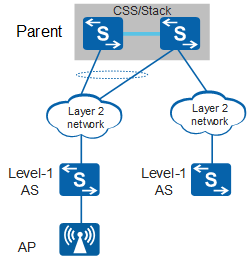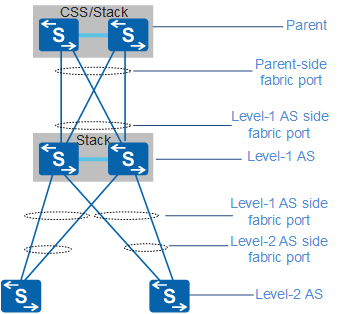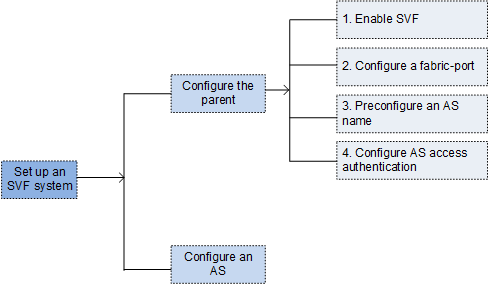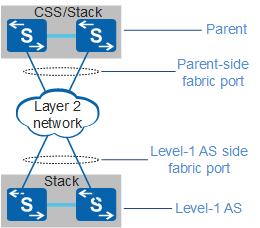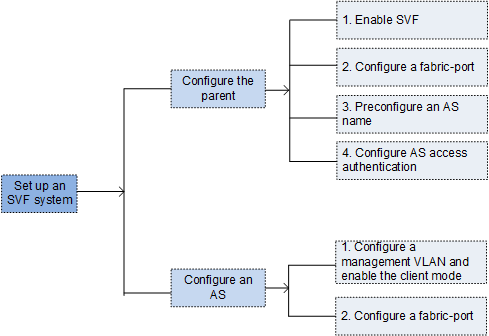SVF Configuration Roadmap

An SVF system can be configured and managed on a switch or eSight. Configuring and managing an SVF system on eSight is visualized and more convenient. For the SVF configuration on eSight, see "SVF Management" in the eSight Product Documentation of the eSight version matching the switch.
Networking Diagram |
Task |
|---|---|
|
|
|
|
|
NOTE:
The fabric ports that connect level-1 ASs to level-2 ASs need to be configured. |
|
NOTE:
The fabric ports that connect level-1 ASs to level-2 ASs need to be configured. |
|
The Parent Is Directly Connected to ASs
In the following example based on Figure 1, ASs in an SVF system are classified into level-1 and level-2 ASs. You can connect a level-1 AS to the parent and then a level-2 AS to the level-1 AS.
By default, you do not need to configure the ports that connect a level-1 AS to the parent and connect a level-2 AS to the level-1 AS because ASs are plug-and-play. You only need to configure fabric ports that connect the parent to a level-1 AS and connect a level-1 AS to a level-2 AS. Figure 2 illustrates the process of connecting an AS to the parent directly.
The Parent Is Connected to ASs Across a Layer 2 Network
In the following example based on Figure 3, when ASs connect to an SVF system through a Layer 2 network, only level-1 ASs are supported and APs can connect to ASs.
The fabric port that connects the parent to an AS through a Layer 2 network is called an indirectly connected fabric port. Indirectly connected fabric ports on the parent and fabric ports that connect ASs to an SVF system need to be manually configured. Figure 4 illustrates the process of connecting an AS to the parent across a Layer 2 network.




